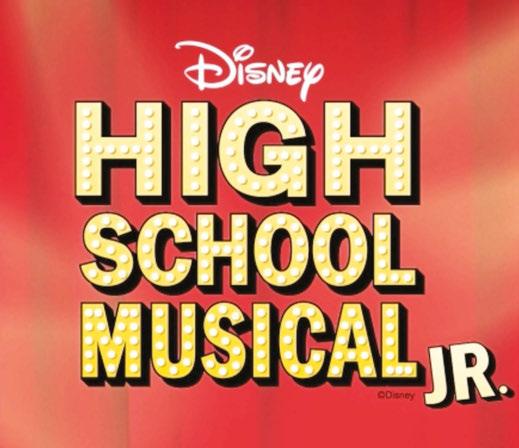
6 minute read
High School Musical Jr
In the summer of 2020, when it was becoming apparent that the upcoming pandemic school year would look dramatically diferent from all other years, theater arts teacher Sarah Carlin and Upper School music teacher Jenn Boyum found themselves wondering whether the annual Upper School musical, the centerpiece of Shore’s performing arts calendar, could still go on. The Trustey Family Theatre would be closed to large gatherings, and health and safety rules prohibited groups from singing indoors. Even outdoor singing was approved only with masks and 10 feet of distance between singers.
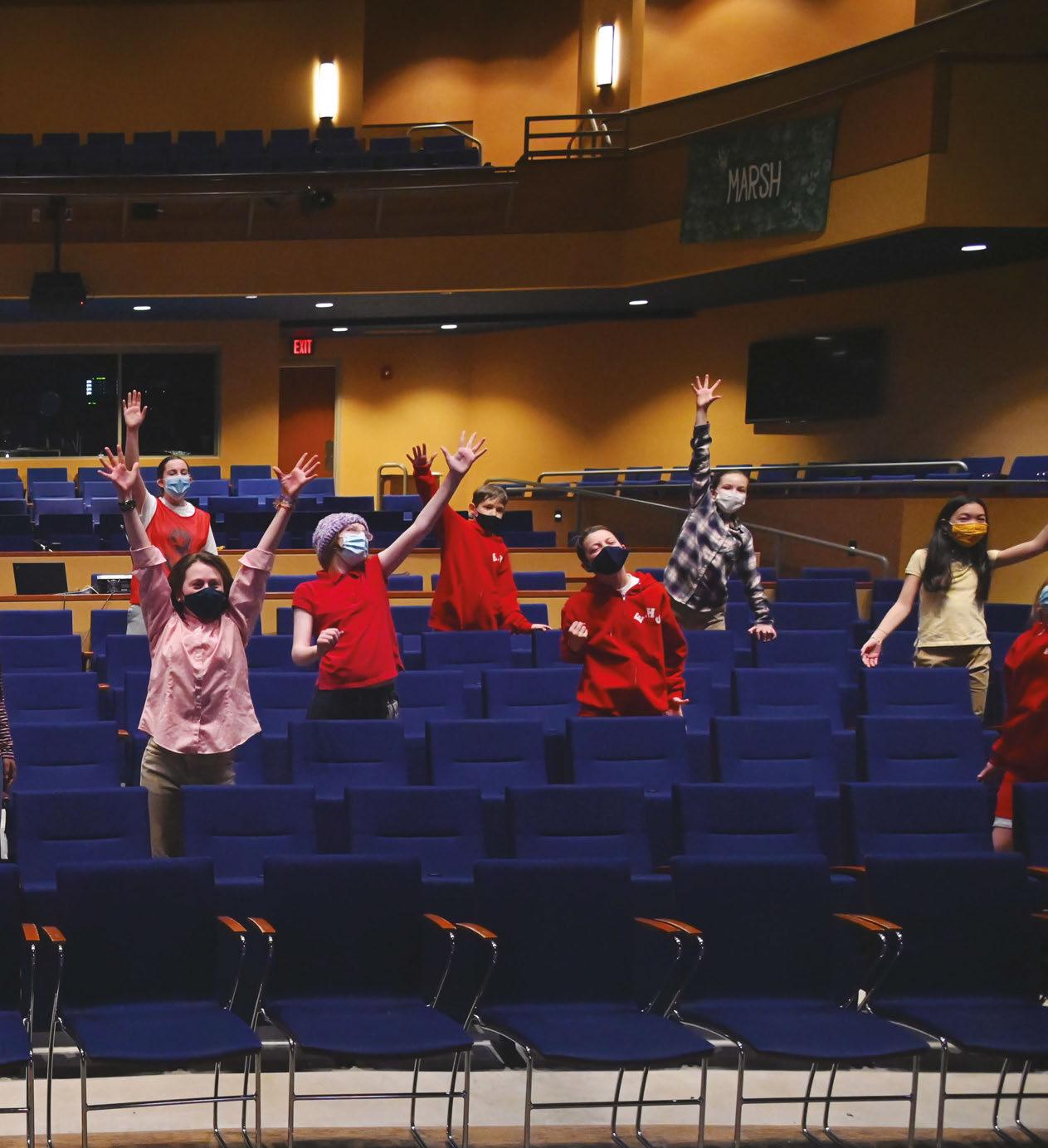
Advertisement
The only option Carlin and Boyum could see for keeping the musical alive in this environment was presenting it as a video. But, would it be an entirely virtual production, with all parts recorded separately, or was there some way to preserve in-person performance elements of the musical while still following the rules? After all, according to Carlin, building community through performance is one of the most important goals in staging the musical each year.
Carlin and Boyum found answers to their questions in Disney’s High School Musical Jr., a one-hour stage version of the hit movie. In it, two high school juniors from rival cliques threaten the school’s social order. The protagonists, Troy Bolton, a basketball team captain, and Gabriella Montez, a shy transfer student excelling in math and science, try out for the lead parts in their high school musical, and this causes division throughout the school. Despite other students’ attempts to thwart their dreams, Troy and Gabriella aim to resist peer pressure and rivalry and wish to inspire others not to “stick to the status quo.” However, they have to battle high school diva Sharpay Evans and her twin brother Ryan, who both seek to sabotage the friendship and romance between Troy and Gabriella and gain the leads in the school musical.
With its catchy, relatable songs and its familiar school settings and costumes, High School Musical Jr. was the ideal vehicle for creating a hybrid of virtual and in-person performances. At home, students learned and recorded themselves singing musical numbers largely on their own. At school, they lip-synced the songs for the camera, and practiced and performed choreography and spoken scenes together in person, though masked and socially distanced. Some scenes could be staged on location—a pep rally in the Howard Gymnasium, or a study session in the Library, for example— while others were recorded in front of a green screen, which allowed a virtual background to be dropped in during editing. Carlin and Boyum, with the assistance of Vinny Laino, Theater Manager and Technical Theater Director, then went through a time-consuming process of layering together the students’ vocal recordings with their lip-synced performances to create completed songs, and they stitched together scenes acted at school to build out the storyline.
“We could have chosen a completely virtual production,” explains Carlin. “We could have required kids to do everything at home, putting together scenes via Zoom. But we decided that what is paramount in what we do here at Shore
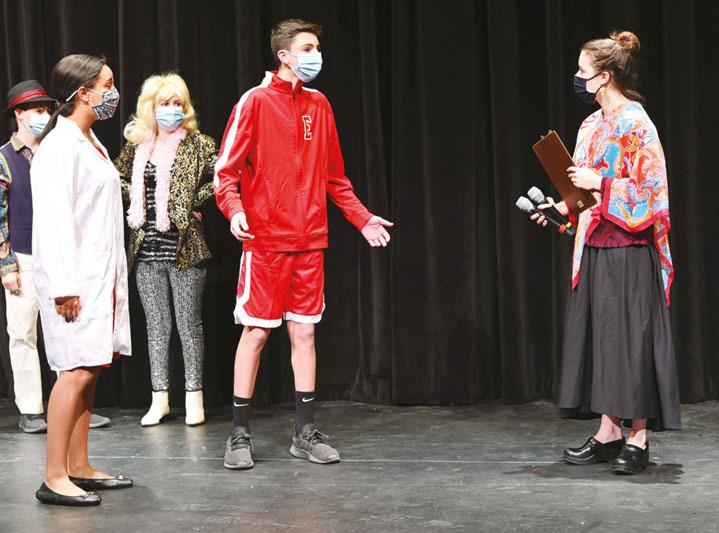
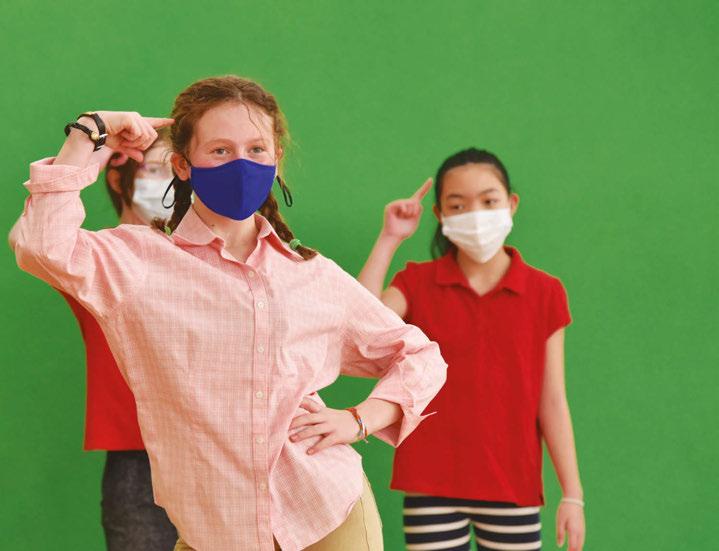
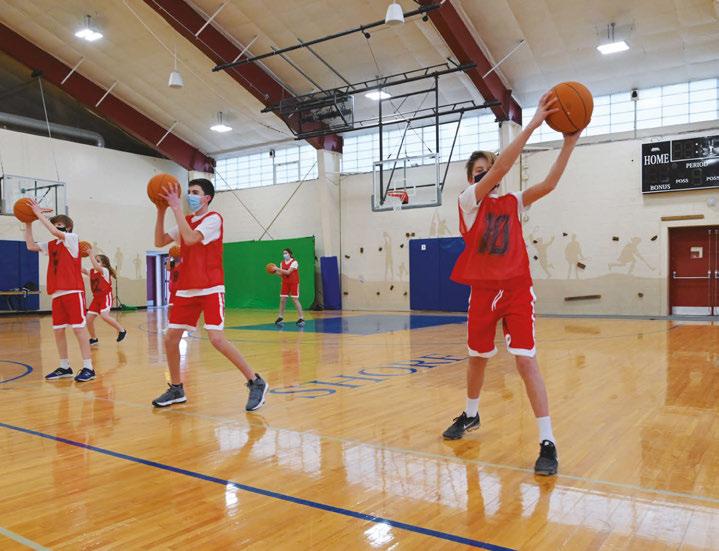
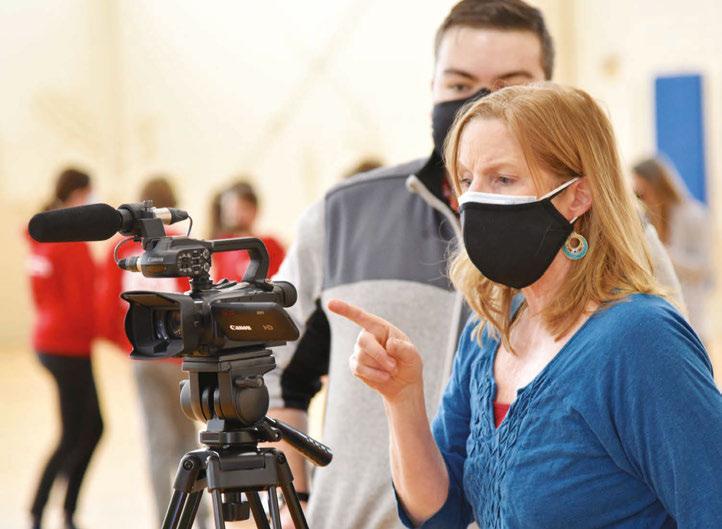
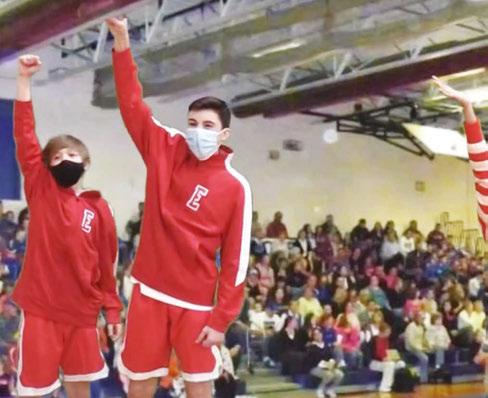
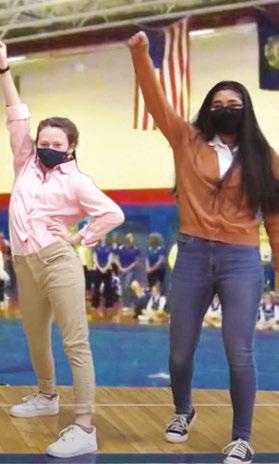
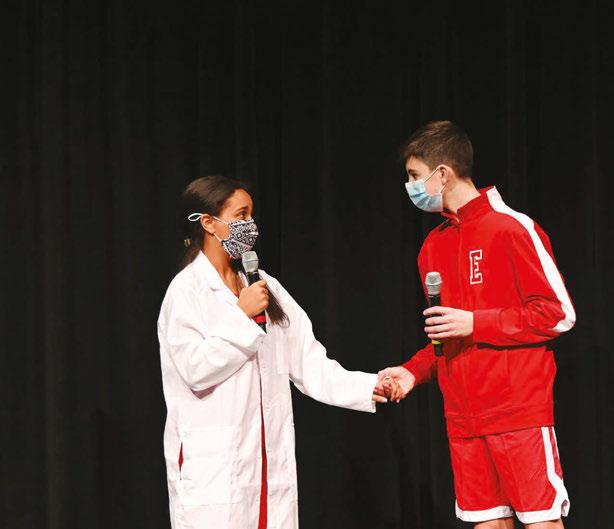


Opposite page, top to bottom: Kipley Kagan performed a dance number; Amanda Cooper, Jack McVeigh, and Rae Hanlon practiced a scene; members of the cast rehearsed in the Howard Gymnasium. This page, clockwise from top left: Sarah Carlin directed a scene with Vinny Laino; Amanda Cooper and Jack McVeigh lip-synced; members of the cast cheered; members of the cast rehearsed an ensemble number against a greenscreen.
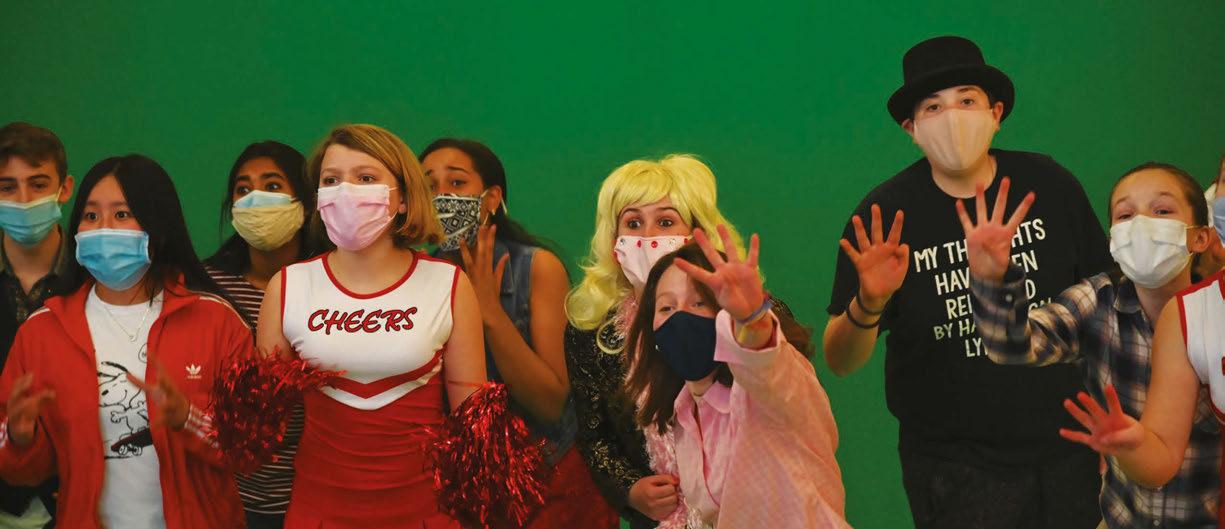
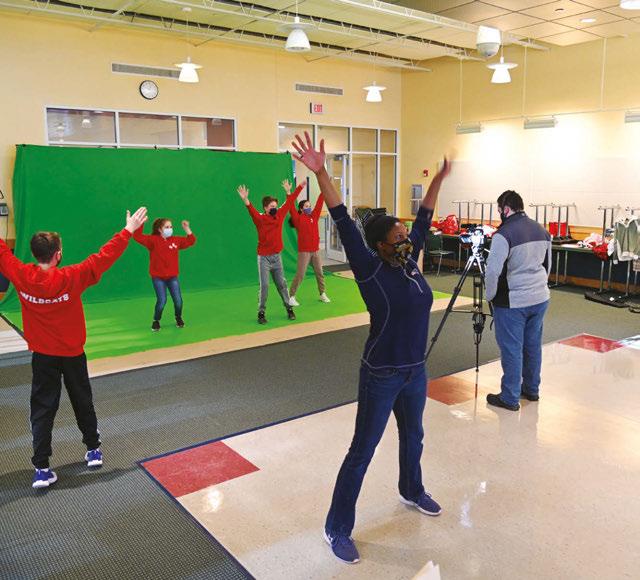
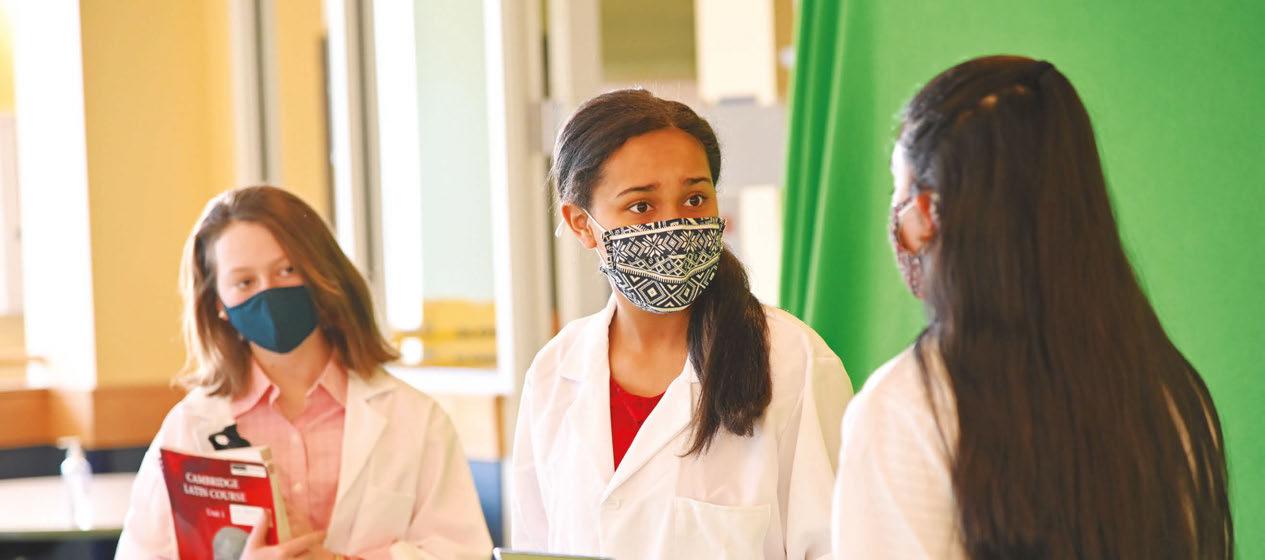
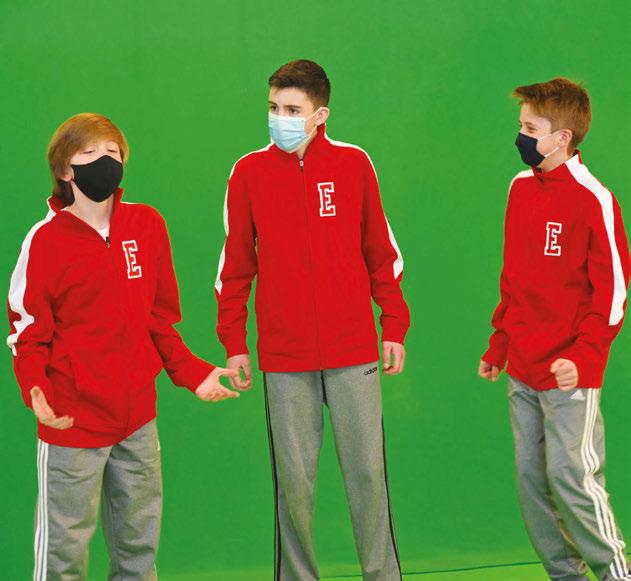
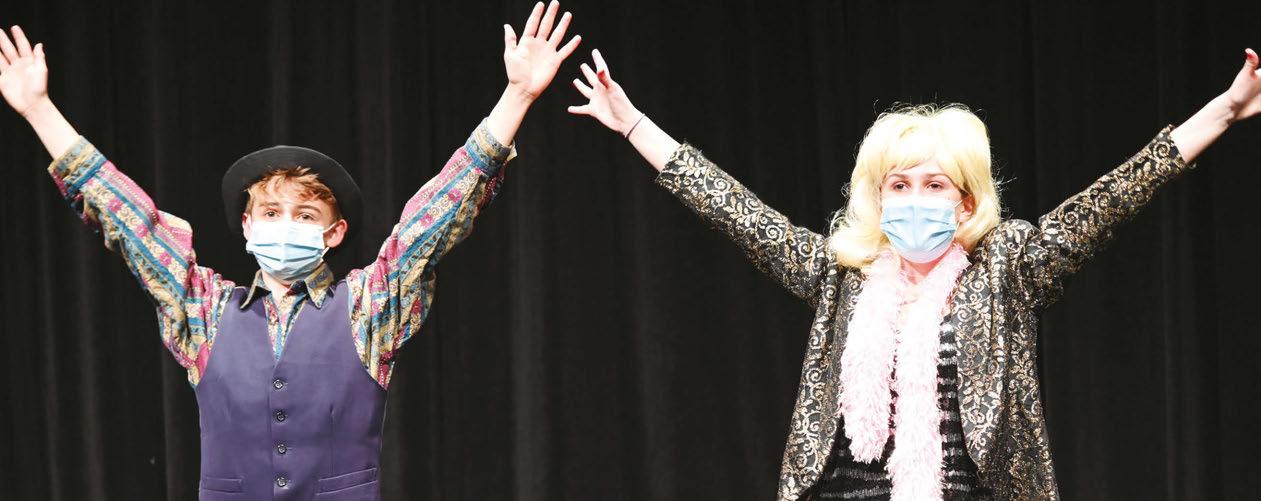
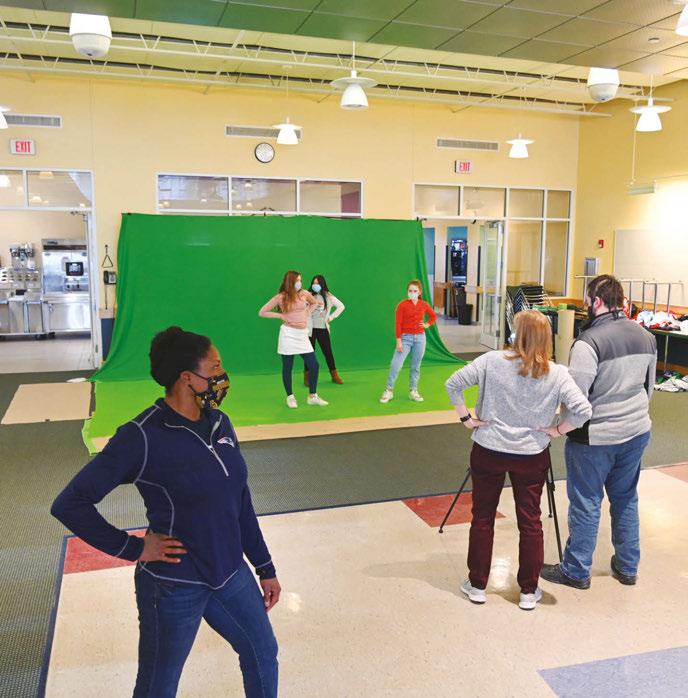
Above: Kindergarten teacher Keisha Myrie looked on as students practiced dance moves. Below: Sarah Carlin gave direction to Ethan Oder and Arianna Bocchino. Previous page, clockwise from top: Amanda Cooper acted in a scene with Kipley Kagan and Laya Raju; dancers rehearsed; Ethan Oder and Arianna Bocchino posed on stage; Ollie Wallace, Jack McVeigh, and Will Sumner acted in a scene. is giving children an experience of community— rehearsing together, learning choreography together, being in scenes and acting together, being able to respond to each other in the same place. So we decided to do the ‘pandemic version’ of this musical, where actors are in person, but masked and observant of all the other safety precautions for the entire production.”
Carlin, Boyum, and the cast dealt with numerous challenges during the making of High School Musical Jr.—not the least of which was learning to act while wearing a mask. “We wondered how they would convey emotion,” recounts Boyum. “Ultimately, they had to dig deep, boosting their physical expressiveness beyond the face, which was two-thirds covered. To show who is talking and what they’re feeling, we had to coach them to use gestures and body language. In the end, they did a great job of making sure the expressive quality of each scene is still intact.”
Filming, rather than staging, the musical presented its own learning curve. “With a traditional musical,” explains Carlin, “there’s a system, and we know how everything works. With this production, we had to throw out all of the rules we usually follow.” For example, Carlin and Vinny Laino, who ran the video camera, had to experiment with how to use the green screen to best efect. There were numerous large ensemble numbers in which not all the actors could ft within the green screen frame; these scenes had to be stitched together from multiple takes of smaller groups of students. The limited time available for the musical was another challenge for flming. “Normally we’d have four days a week plus some weekend days for rehearsals alone,” says Boyum. “This year, we had only a few days a week to work with the students, and we could gather only small groups at a time, further limiting our window for rehearsal and flming.”
Still, says Carlin, the extra efort was all worth it, enabling as close to an in-person musical experience as possible under the circumstances. “Sure, it’s nice to have a polished stage production at the end,” she admits, “but honestly, with the year we had, giving our students the opportunity to be together in this process was far and away the most important thing to us. It wasn’t easy, and we’re so proud of them for the way they stuck with it. They had to stay apart while they were performing, they had to be diligent about learning the material on their own, they had to support each other in unprecedented times. All of this just elevated the experience for them. By the end, they were truly happy to have been part of it.”
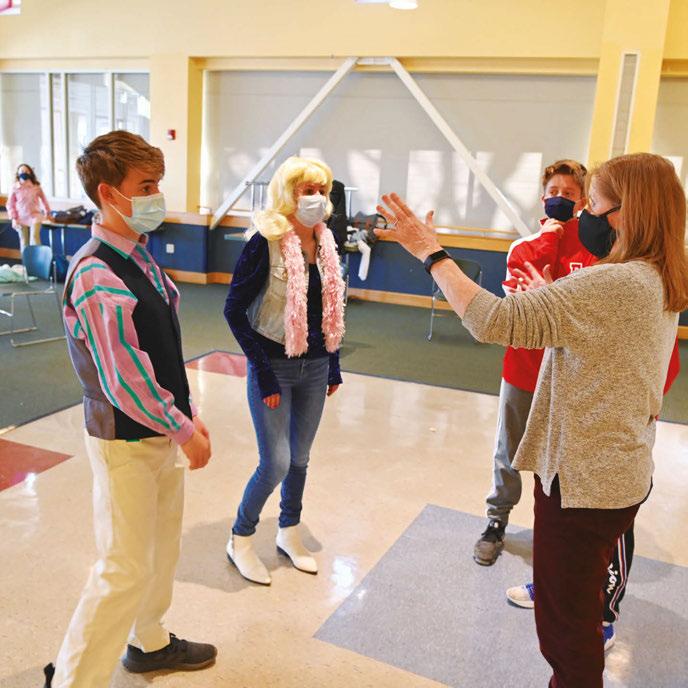
Watch the video of High School Musical Jr. by scanning the QR code or visiting bit.ly/3AMi9XZ










